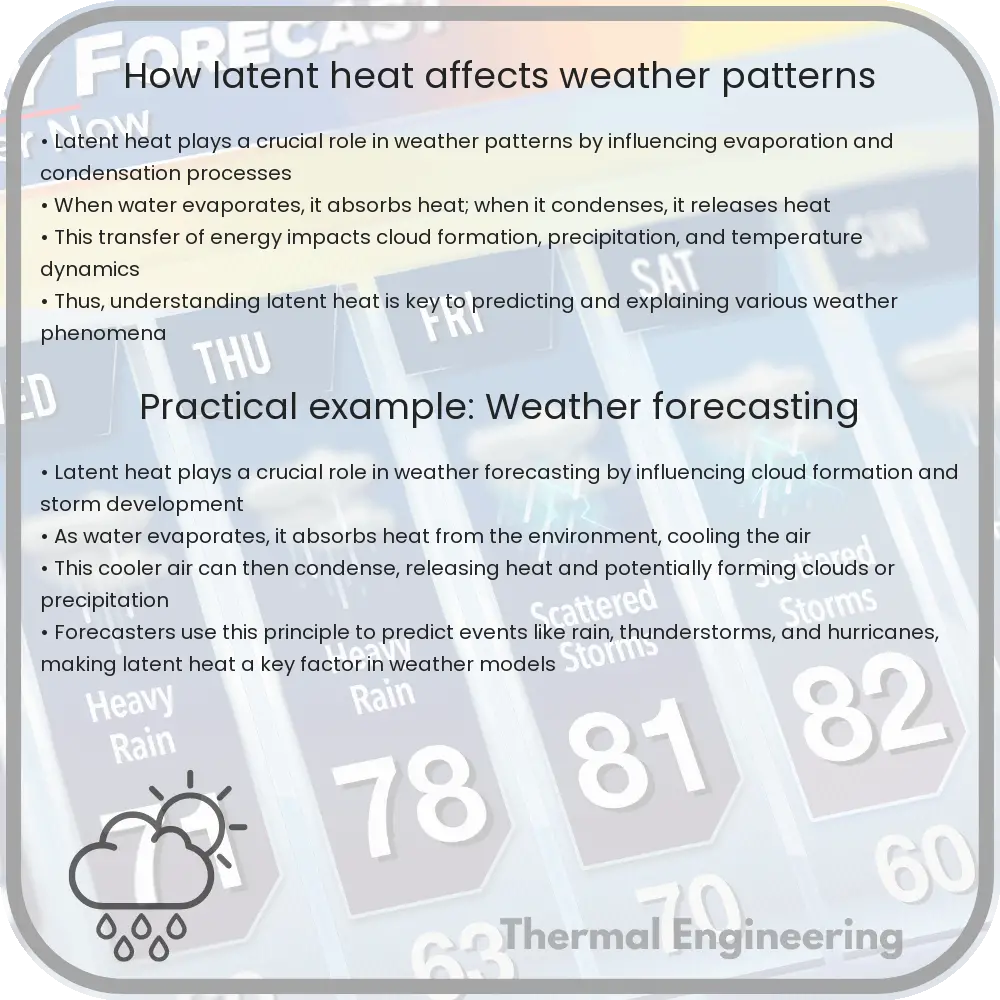Learn about latent heat and its critical role in shaping weather patterns, cloud formation, and global climate systems.

Understanding How Latent Heat Affects Weather Patterns
Latent heat is a fundamental concept in both physics and meteorology, playing a crucial role in the formation and evolution of weather patterns around the globe. This type of heat is involved in processes of phase changes of water – namely melting, freezing, evaporation, and condensation. The impact of latent heat on weather is profound, influencing everything from temperature distribution to the development of clouds and storm systems.
What is Latent Heat?
Latent heat is the energy absorbed or released by a substance during a phase change without a change in temperature. It is categorized into two types:
- Latent heat of fusion – energy absorbed or released during melting or freezing.
- Latent heat of vaporization – energy absorbed or released during evaporation or condensation.
These processes are crucial in the atmospheric context, especially the latent heat of vaporization, which has significant effects on weather and climate.
Latent Heat in Atmospheric Processes
When water evaporates, it absorbs heat from its surroundings, effectively cooling the environment. This absorbed energy, carried by water vapor, is termed the latent heat of vaporization. Conversely, when water vapor condenses into liquid water, it releases the stored energy as heat, thereby warming the surrounding air. This interplay of energy absorption and release has vital implications for weather patterns:
- Temperature Regulation: Evaporation consumes a considerable amount of heat, thereby controlling the temperature and thermal comfort in various regions.
- Cloud Formation: As warm, moist air rises and cools, the water vapor condenses to form clouds. The release of latent heat during condensation warms the air, causing it to rise further and potentially develop into larger cloud systems or storm structures.
- Storm Development: In storm systems, such as hurricanes and thunderstorms, the release of latent heat through condensation is pivotal. It enhances atmospheric instability, which can intensify the storm.
Latent Heat and Climate Dynamics
The redistribution of latent heat across different parts of the earth plays a crucial role in driving large-scale atmospheric circulation patterns, such as trade winds and monsoons. These patterns are essential for transferring heat from the tropics to the poles, thereby regulating global climate systems.
Furthermore, changes in surface temperature due to latent heat flux influence sea and air currents, which can affect weather conditions over vast areas. For instance, the El Niño Southern Oscillation (ENSO) phenomenon alters the patterns of precipitation and temperature across the globe, largely due to changes in oceanic and atmospheric heat distribution influenced by latent heat.
Conclusion
Latent heat is a key player in the dynamics of the atmosphere, central to understanding how local weather conditions converge into global climate systems. By studying the movement and effects of latent heat, meteorologists can better predict weather patterns, enhancing both our understanding and preparedness for weather-related natural events.
Thus, latent heat not only contributes to daily weather fluctuations but also impacts broader climatic changes, illustrating the intrinsic link between physical principles and real-world phenomena.